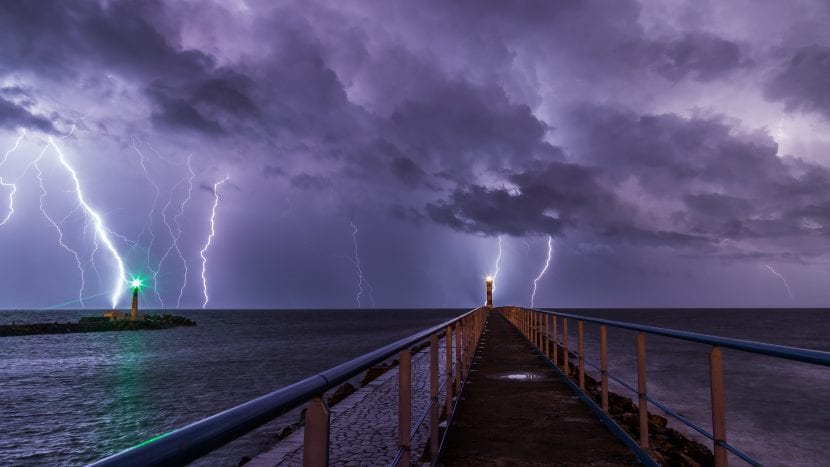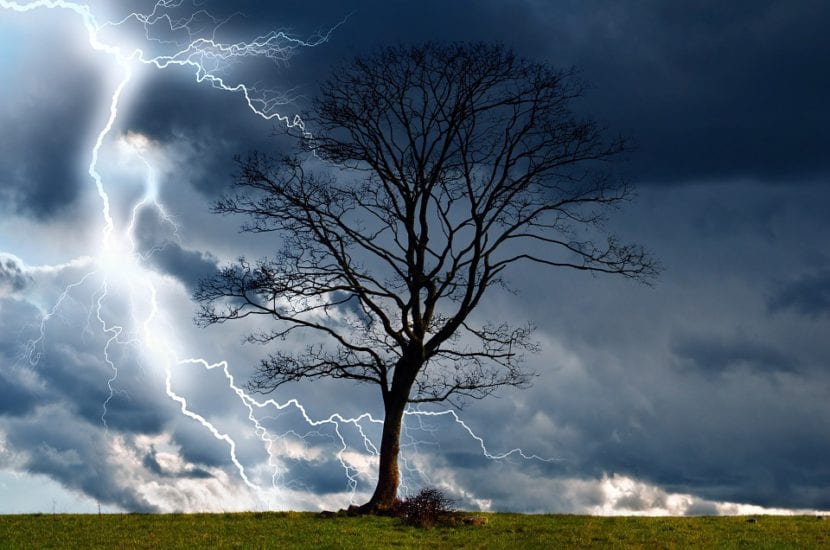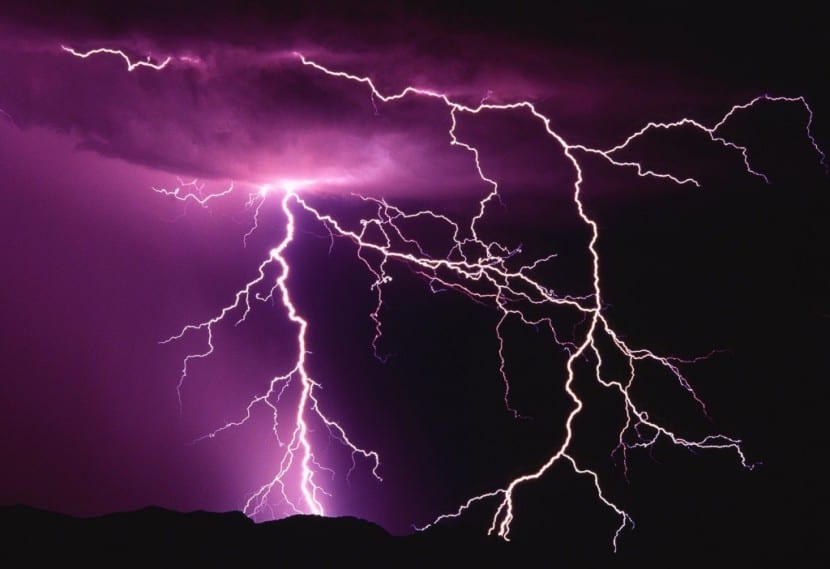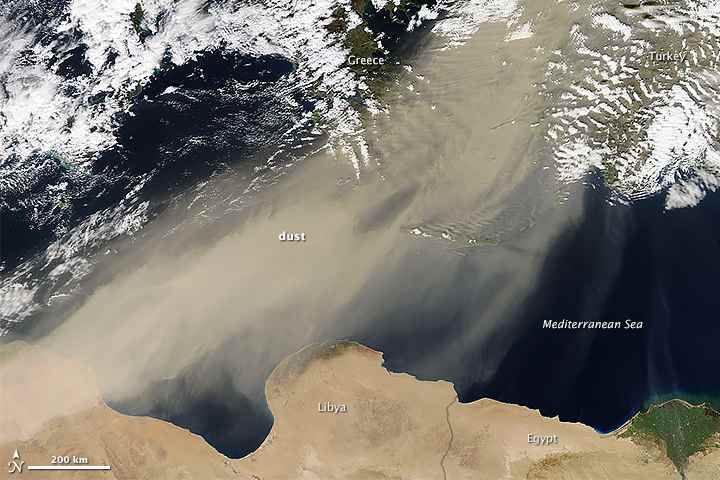
I love storms. When the sky is covered with Cumulonimbus clouds, I can't help but feel wonderful, almost as much as the one that those who love the Sun feel when they carry the star king comes out for the first time in many days.
If you also like them, you will surely be interested in reading everything that I am going to tell you next. Find out what the storm is, how it forms and much more.
What is the storm?

A storm is a phenomenon characterized by the presence of two or more air masses that are at different temperatures. This thermal contrast causes the atmosphere to become unstable, causing rain, winds, lightning, thunder, lightning and sometimes also hail.
Although scientists define a storm as a cloud that is capable of producing audible thunder, There are other phenomena that are also called as such, which are those that on the earth's surface are associated with rain, ice, hail, electricity, snow, or strong winds which can transport particles in suspension, objects or even living beings.
If we talk about its characteristics, without a doubt we have to talk about the vertically developing clouds that produce. These they can reach an impressive height: from 9 to 17km. That's where the tropopause is located, which is the transition zone between the troposphere and the stratosphere.
The cycle of activity of a storm usually has an initial phase of formation, an intermediate phase of maturity and a final phase of decay that lasts around one or two hours. But generally there are several convective cells that occur simultaneously, so the phenomenon can last up to days.
Sometimes a storm can evolve to supercell state, which is a huge rotating storm. It is capable of originating series of ascending and descending currents and abundant precipitation. It's kind of like the perfect storm 😉. By containing several vortices of air, that is, wind revolving around a center, it can produce waterspouts and tornadoes.
How is it formed?
So a storm can form a low pressure system needs to be close to a high pressure one. The first will have a low temperature, while the other will be warm. This thermal contrast and other properties of humid air masses originate the development of ascending and descending movements producing the effects that we can like so much or on the contrary dislike, such as heavy rains or winds, without forgetting electrical discharges. This discharge appears when the breakdown voltage of the air is reached, at which time the lightning is generated. From it, if the conditions are right, lightning and thunder can originate.
Types of storm
Although all are formed more or less in the same way, depending on their characteristics we can distinguish several types. The most important are:
Electrical

It is a phenomenon that is characterized by the presence of lightning and thunder, which are the sounds emitted by the first. They originate from Cumulonimbus clouds, and are accompanied by strong winds, and sometimes also heavy rain, snow, or hail.
Sand or dust

It is a phenomenon that occurs in arid and semi-arid regions of the world. The wind moves a large mass of particles at a speed of more than 40km / h, being able to finish in very distant continents.
Of snow or hail
It is a storm in which water falls in the form of snow or hail. Depending on its intensity, we can speak of weak or severe snowfall. When it is accompanied by gusts of wind and hail, it is called snowfall.
It is a very frequent phenomenon during the winter in high altitude areas, since frosts are common in these regions.
Of objects and living beings
It occurs when the wind carries fish or objects, for example, and they end up falling towards the ground. It is the most striking storm of all, and it is probably one of the least we would like to see.
Water hoses
They are masses of clouds that rotate rapidly and that descend to the surface of the land, the sea or a lake. There are two types: tornadic, which are tornadoes formed on water or land that later passed into the aqueous medium, or non-tornadic ones. The existence of the former depends on a mesocyclone, which is an air vortex with a diameter of 2 to 10 km that originates within a convective storm and that can cause significant damage with maximum winds of 510 km / h; in the case of the latter, they form under the base of large cumulus clouds and are not as violent (their maximum wind gusts are 116km / h).
Tornados
https://youtu.be/TEnbiRTqXUg
They are a mass of air that rotates at high speed whose lower end is in contact with the Earth's surface and the upper end with a cumulonimbus cloud. Depending on the rotation speed and the damage it causes, its maximum wind gusts can be 60-117Km (F0) or up to 512 / 612km / h (F6).
Did you know what storms were and how they formed?